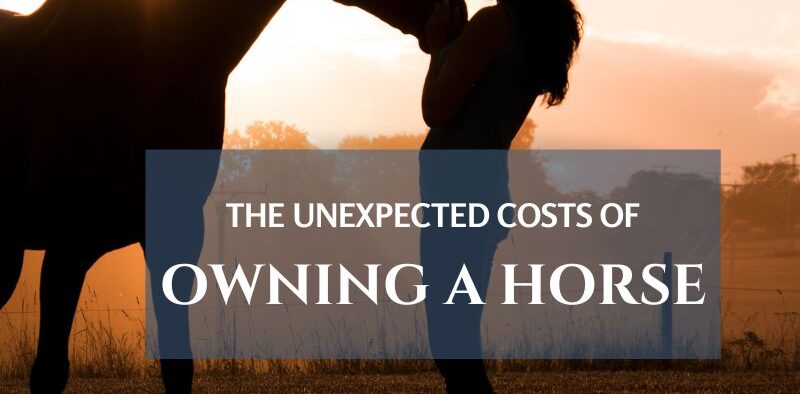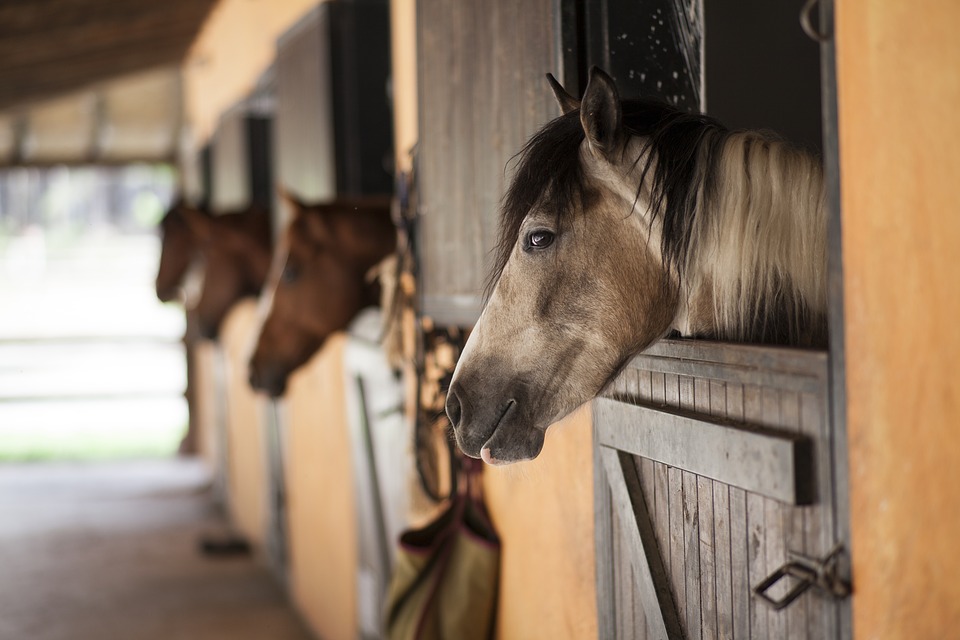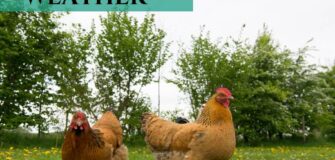The Unexpected Costs of Owning a Horse
Share

Horses are majestic creatures, and owning one can be a truly rewarding experience. However, the initial purchase price is just the tip of the iceberg when it comes to horse ownership. There are many unexpected costs that can add up quickly, so it’s important to be well-prepared before bringing a horse home.
If you’re thinking of becoming a horse owner, please read this through before purchasing. Horses are a big responsibility requiring lots of care. They are well worth it every penny, but if you are already financially strapped, you may want to consider leasing a horse first.
Feeding: A Never-Ending Hunger
One of the biggest ongoing costs of horse ownership is food. Horses are large animals with big appetites, and they need a constant supply of hay, grain, and other supplements to stay healthy. The cost of feeding can vary depending on the size and age of your horse, their activity level, your location, and the quality of the feed you choose. However, you can expect to spend anywhere from $200 to $400 per month on food alone.
Veterinary Care: Keeping Your Horse Healthy
Just like people, horses need regular veterinary care to stay healthy. This includes routine vaccinations, worming, dental care, and hoof care. You should also budget for an array of unexpected costs, including emergencies, such as colic or injuries.
The cost of veterinary care can vary depending on your location and the specific needs of your horse, but you can expect to spend at least $500 per year on routine care and more for emergencies.
Many new horse owners fail to predict the costs of regular monthly care. This includes things like worming (at least twice per year). One of the more popular wormers is ivermectin, which we’re sure you’ve seen in the news lately. During the recent coronavirus pandemic, prices of the medication were driven even higher due to increased demand.
Remember, improving your biosecurity at the barn can help reduce some of these expenses.
Farrier Services: Keeping Those Hooves in Tip-Top Shape
Horses’ hooves grow continuously. They need regular trimming and shoeing to prevent problems like cracks, chips, and infections. The cost of farrier services can vary depending on your location and the type of shoes your horse needs, but you can expect to pay around $100-$200 per visit.
Since your horses hooves will need to be done every 4-6 weeks, this can really drive up monthly expenses. In 2023, farriers reported charging around $60 for a trim and up to $200 for shoes. That brings the total cost per year to around $480 for trimming and over $1,600 for shoes. Many people fail to plan for this care.

Dental Care
Horses teeth grow continuously and as your horse grows older, they will require additional dental care. this process is known as “floating” and it’s basically a dental tune-up. Imagine a file gently smoothing any sharp edges or overgrowths on their teeth, creating a comfortable, flat surface for efficient munching.
This crucial care typically costs around $150-$300 depending on your location and vet. While young horses may need this care every six months or so. This is necessary to avoid discomfort, digestive issues, and even head-tossing frustration for your horse.
Older horses usually cruise by with annual floatings, but individual needs can vary. Listen for telltale signs like quidding (dropping food) or headshaking, and always trust your vet’s expertise to keep your horse’s pearly whites in tip-top shape!
Horse-Related Gear and Equipment: You’ll Need More Than Just a Saddle
In addition to the cost of the horse itself, you’ll also need to purchase a variety of gear and equipment. This includes saddles, bridles, halters, lead ropes, grooming supplies, blankets, and more. The cost of gear can vary depending on the quality you choose, but you can expect to spend at least $1,000 to get started.
And that’s just the basic equipment needed for the horses! Depending on your style of riding (western, English, dressage, pleasure, etc.) prices can really climb – especially in specialized sports.
Hidden Costs: From Stable Rent to Insurance
There are a number of other hidden costs associated with horse ownership. These include stable rent or boarding fees, if you don’t have your own property. In addition to the basics, new bedding, stall cleaning, manure removal, insurance, and training can increase costs.
Obviously, the cost of these items can vary dramatically depending on your location and needs, but you should budget at least $500 per month per horse.
Cleaning Geldings and Caring for Mares: Specialized Needs
Geldings and mares have some specific needs that can add to the cost of ownership. Geldings may need to be castrated, which can cost around $500. Mares may need to be bred or boarded during foaling, which can be expensive.
Unexpected Expenses: Always Be Prepared
In addition to the regular costs of horse ownership, you should also be prepared for unexpected expenses. Horses are ridiculously prone to injuries and illnesses, and these can quickly add up to a large veterinary bill. It’s a good idea to have a savings account or emergency fund specifically for your horse.
Time: One of the Biggest Unexpected Expenses of Owning a Horse
Horses require a lot of time and attention, even if you’re boarding them elsewhere. While a boarding facility may take care of the feeding and cleaning, you still need to be there to care for your horse. They need plenty of time to exercise and need to be turned out to the arena to stretch and run. They will need extensive training (especially if you have a young horse and are an inexperienced rider). They also need daily brushing, regular bathing and plenty of interaction.
If you’re lucky enough to have room on your property for horses, they will require even more time. Horses need to be fed twice daily and stalls cleaned each time you feed. Horses need to be turned out to graze or play. They also need to their hooves cleaned daily, and they need regular grooming.
Tips for Saving Money on Horse Ownership
- Shop around for deals on hay, feed, and gear.
- Consider buying used equipment.
- Do your own grooming and tack cleaning.
- Learn some basic first-aid skills.
- Consider DIYing some horse projects, such as building your own jumps or obstacles.
Horse Ownership: A Rewarding, But Costly, Commitment
Owning a horse is a rewarding experience, but it’s important to be aware of the costs involved before bringing one home. By budgeting carefully and being prepared for unexpected expenses, you can ensure that you can afford to give your horse the best possible care.










